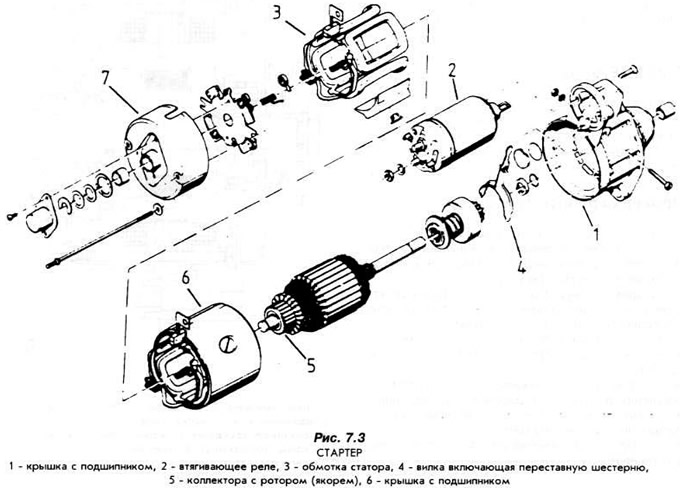
Checking the operation of the starter
To check the starter installed on the car, the battery must be fully charged.
Check if the battery ground wire clamp is corroded.
Check that the starter is connected correctly.
Check the voltage drop across the clamp "50" starter while starting the engine. A voltage drop of 0.5 V is acceptable. If the voltage drop is greater, it is necessary to check the ignition switch wire clamps, the starter solenoid relay and plug connections in the engine starting circuit.
Connect a voltmeter to the battery.
Connect an ammeter in series with the battery-starter circuit using "crocodiles" (clamps).
Engage fifth gear and tighten the handbrake.
Start the starter and read both gauges.
The time of the check should not exceed 5 seconds.
The following values are considered acceptable:
- voltage 8 V.
- current strength 410 A.
If the voltage is too low, the cause of the voltage drop must be investigated. A large current consumption indicates a short circuit in the starter.
If the current consumption is too low. the reason for this may be:
- dirty starter manifold
- worn starter brushes
- poor conductivity of the solenoid relay contacts,
- break in the engine start circuit.
Visitor comments